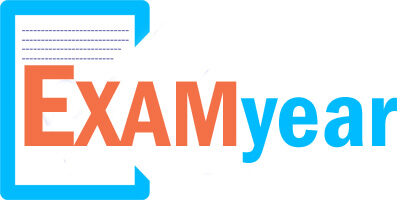Model Questions on Law – Legal Questions Objective
Interested users can download the Model Questions on Law from the links enclosed below. Download the Last 5 Years Model Questions on Law Solved along with the Answers of each question.

This Model Questions on Law may vary from the Actual paper. Use the Model Questions on Law as a reference for the exam preparation. Check the Model Questions on Law from this page.
At the bottom of this page, you will find ‘Click here links’ for downloading the Model Questions on Law. Click on the required link & download your related Model Questions on Law to make as a reference for your scheduled preparation.
Law Related Model Questions and Answers
1. The Fundamental Rights secured to the individual are
(a) Limited to the State action only
(b) Meant to protect persons against the conduct of private persons
(c) Meant to protect persons against the police action
(d) All of the above are true
2. The expression ‘every person’ in Article 5 includes
(a) A prisoner
(b) Member of armed force
(c) Person living within the territory of India
(d) All of the above are true
3. Right to freedom of religion cannot be restricted on the ground of
(a) Public order
(b) Security of State
(c) Health
(d) Morality
4. In which of the following cases, it was observed that Article 14, 19 and 21 are not mutually exclusive and they jointly aim at reasonableness and fairness
(a) Ram Swarup v. Delhi Administration
(b) Jagan Nath v. UOI
(c) Golak Nath v. State of Punjab
(d) Maneka Gandhi v. UOI
5. It has been said in many cases viz., Devdasan v. UOI, that Article 16 should be read with
(a) Article 45 and 332
(b) Article 46 and 335
(c) Article 15 and 332
(d) Article 46 and 332
6. Right to travel abroad is a part of ‘personal liberty’ as envisaged under Article 21
(a) The statement is true
(b) The statement is incorrect
(c) The right to travel abroad is person’s personal liberty but within the procedure established by law
(d) This article deals with personal liberty in India only and not for the travel abroad
7. Article 30(2) lays down that there cannot be any discrimination in giving aid to educational institution on the ground of
(a) Institution is being managed by the minority
(b) Institution is managed by the religious or linguistic minority
(c) Institution is managed by religious, cultural and linguistic minority
(d) Institution is managed by cultural, religious, linguistic minority or majority
8. The expression ‘minority’ in Article 30 means any community which is
(a) Less than 50% of the population of a particular State as a whole
(b) 40% of the population of a particular State as a whole
(c) It is determined on the basis of the entire population of the country
(d) None of these
9. According to Article 22(4) no detention of any person is possible without the intercession of the Advisory Board for a period of
(a) Three months
(b) Two months
(c) Twelve months
(d) Less than two months
10. In case of A.K. Gopalan v. State of Madras, the Preventing Detention Act, 1950 was found conflicting with the two Articles
(a) Articles 14 and 17
(b) Articles 19 and 21
(c) Articles 23 and 25
(d) Articles 23 and 32
11. The Right to Property was dropped from the list of Fundamental Rights by the
(a) 24th Amendment
(b) 42nd Amendment
(c) 44th Amendment
(d) None of these
12. The Directive Principles are aimed at
(a) Securing political freedom
(b) Securing social and economic freedom by appropriate action
(c) Executive supremacy
(d) Judicial supremacy
13. The term ‘State’ in connection with the Directive Principles
(a) Has a meaning given to it in reference to Fundamental Rights
(b) Means only Union and State Legislature
(c) Means all three organs of the Government
(d) Means the same thing as in connection with the Fundamental Rights
14. Power of Governor to grant pardon etc., and to suspend, remit or commute sentence in certain cases is a statutory power. It is given in
(a) Article 159
(b) Article 161
(c) Article 162
(d) Article 163
15. The quorum to constitute a meeting of the House of Parliament shall be
(a) 1/10th of total number of members
(b) 2/3rd of total number of members
(c) 1/3rd of total number of member
(d) None of these
16. Total strength of Lok Sabha members is
(a) 542
(b) 525 from the State and 20 from Union Territories
(c) 525 from the States and 20 from Union Territories and 2 nominated by President from Union Territory
(d) 555
17. The provision of Article 368 of the Constitution of India, as it stands today deals with
(a) Power of Parliament to amend the Constitution
(b) Procedure for amendment of the Constitution to be followed by the Parliament
(c) Power as well as procedure for amendment of the Constitution
(d) Passing the ratification of Amendment Bills by State Legislature
18. The Supreme Court of India
(a) Is a Court of record and has power to punish for its contempt
(b) Is only highest Court of Appeal
(c) Is like House of Lords on its Judicial side
(d) Is in all respects like Supreme Court of USA
19. The voting age has been reduced from 21 to 18 by the Parliament in the year
(a) 1976
(b) 1978
(c) 1989
(d) 1991
20. The Ninth Schedule to the Indian Constitution was added by:
(a) First Amendment
(b) Eighth Amendment
(c) Ninth Amendment
(d) Forty-Second Amendment
21. Which among the following is not a Fundamental Right?
(a) Right to strike
(b) Right against exploitation
(c) Right to equality
(d) Right to freedom of religion
22. How many duties are conferred on the citizens in Article 51A
(a) 8
(b) 9
(c) 11
(d) 12
23. Reservation of seats in educational institutions in favour of Scheduled Castes and Tribes are governed by
(a) Article 15(4) of the Constitution
(b) Article 16(4) of the Constitution
(c) Neither (a) nor (b)
(d) Both (a) and (b)
24. Right to work in India is
(a) Fundamental right
(b) Directive principle
(c) Is not a fundamental right but it can be claimed after employment
(d) Constitutional duty
25. The Legal power or position of the President of India is
(a) The same as in the English Constitution
(b) Like the President of America
(c) Like the Administrator of Sikkim
(d) Like that of Chief justice of Supreme of India
More Question Set on Law MCQs from Various Exam
| Model Question | Old Question |
| Sample Papers | Mock Test |
| Practice Set | Question Bank |
| Important Questions | Test Papers |
| Typical Questions | Selected Questions |
26. The Code of Civil Procedure is an adjective law. The statement is
(a) True
(b) False
(c) Partly correct
(d) None of these
27. ‘Decree’ has been defined in section _____________ of the Code of Civil Procedure
(a) Section 1(1)
(b) Section 1(2)
(c) Section 2(1)
(d) Section 2(2)
28. An order rejecting the plaint for non-payment of the court fees is
(a) Judgment
(b) Not decree
(c) Decree
(d) None of these
29. Which of the following is not a decree?
(a) Rejection of a plaint
(b) Dismissal in default
(c) Both (a) and (b)
(d) None of these
30. Which of the following sections of the Code of Civil Procedure 1908, defines ‘suit’?
(a) Section 2(3)
(b) Section 2(4)
(c) Section 2(5)
(d) Not defined
31. Statement given by the judge on the grounds of a decree or order is called
(a) Final order
(b) Final decree
(c) Judgment
(d) None of these
32. A bundle of essential facts which is necessary for the plaintiff to prove before he can succeed in the suit is called
(a) Pleadings
(b) Proof
(c) Evidence
(d) Cause of action
33. Which of the following sections provides that suits shall be instituted where subject matter situates?
(a) Section 15
(b) Section 17
(c) Section 16
(d) Section 18
34. Section 16 to 18 of the Code of Civil Procedure, 1908 deals with suits relating to
(a) Movable property
(b) Immovable property
(c) Both (a) and (b)
(d) None of these
35. A, residing in Delhi publishes in Calcutta statements defamatory to B. The newspaper is circulated in Bombay, Madras and Raipur. B can sue A in
(a) Delhi or Calcutta
(b) Bombay or Madras
(c) Raipur
(d) Any of the five places above
36. Which of the following sections of the Code of Civil Procedure, 1908 deals with ‘power to transfer suits which may be instituted in more than one court’?
(a) Section 20
(b) Section 21
(c) Section 22
(d) Section 23
37. The person who may be joined as plaintiffs in a suit is provided under
(a) Order 1, Rule 1
(b) Order 1, Rule 2
(c) Order 2, Rule 2
(d) Order 3, Rule 1
38. Where a new defendant is added
(a) Plaint to be amended
(b) Plaintiff need to be amended
(c) Depends
(d) None of these
39. Pleading means
(a) Plaint only
(b) Written statement only
(c) Plaint and written statement
(d) Plaint, written statement and replication
40. In a suit for partition, all sharers are
(a) Necessary parties
(b) Proper parties
(c) Depends
(d) None of these
41. ‘Particulars to be contained in plaint’ is mentioned in
(a) Order VI, Rule 15
(b) Order VI, Rule 12
(c) Order VII, Rule 1
(d) Order IV, Rule 14
42. A court can return the plaint for presentation to the proper court
(a) At the time of presentation
(b) Before framing of issues
(c) Before the trial begins
(d) At any time
43. The order returning the plaint is
(a) Appealable
(b) Not appealable
(c) Revisable
(d) None of these
44. Which of the following sections of the Code of Civil Procedure, 1908, deals with procedure of service of summons where defendant resides in another State?
(a) Section 27
(b) Section 28
(c) Section 29
(d) Section 30
45. In legal set off the amount must be recoverable at the date of
(a) Suit
(b) Written statement
(c) Framing of issues
(d) None of these
46. Order IX of the Code of Civil Procedure, 1908, deals with
(a) Summons to witness
(b) Appearance of parties and consequences of non-appearance
(c) Written statement
(d) Set-off
47. Can the inherent power be used to set aside an ex parte decree?
(a) Yes
(b) No
(c) None of these
48. Set-off is a
(a) Plea for the plaintiff
(b) Defense of the defendant
(c) Both (a) & (b)
(d) Neither (a) nor (b)
49. Which of the following orders deals with issue and service of summons?
(a) Order V
(b) Order VI
(c) Order VII
(d) Order IV
50. Is the principle of resjudicat applicable to criminal proceedings?
(a) Yes
(b) No
(c) Depends
(d) None of these

